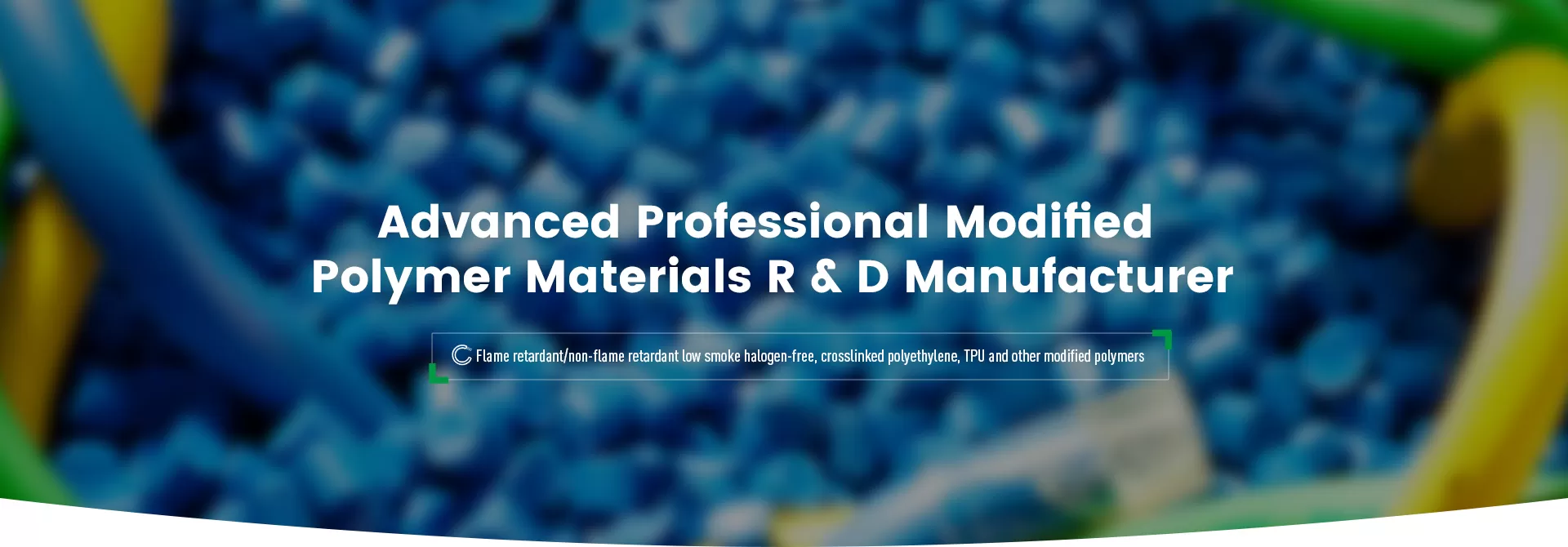
In the structure of wires and cables, the sheath layer is a very important link. With the advancement of the new energy industry and the wave of consumer electronics upgrades, thermoplastic polyurethane TPU material has rapidly risen in the field of high-end cable sheath with its unique physical and chemical properties.
In the application of wire and cable sheaths, the physical performance of TPU is remarkable. It can maintain flexibility in a low temperature environment of -30℃, avoid brittle fracture, and ensure stable power transmission in cold areas.
Its hardness range spans from Shaw A60 to D80, and the formula can be flexibly adjusted according to the cable application scenario. When the cable needs to be bent frequently, the bending resistance of TPU becomes a key advantage. Experimental data shows that its bending resistance is more than five times that of traditional PVC materials, which is particularly suitable for charging cables and industrial robot harnesses that are frequently reeled.
Wear resistance is also an outstanding feature of TPU. Taking the Mirathane series of Miracll brand as an example, its wear resistance is five times higher than that of natural rubber, making it an ideal choice for high-frequency use products such as data cables and headphone cables.
In the field of flame retardant safety of wire sheaths, TPU can stably reach the UL94 V-0 level by adding phosphorus-nitrogen composite flame retardants. For example, Angreen's PFUBK90363 model TPU pellets achieve a balance between flame retardancy and mechanical properties through a special formulation process.
In the field of high-voltage wiring harnesses for new energy vehicles and charging pile cables, TPU is replacing cross-linked polyethylene. The 800V high-voltage platform places more stringent requirements on insulating material, and TPU's corona resistance and high temperature resistance (long-term use at 125°C) become key advantages. Its melt-processable characteristics avoid the irradiation cross-linking process and shorten the production cycle.
Flame-retardant technology innovation continues to break through. In traditional solutions, different flame-retardant grades require independent color matching, which increases the cost of switching production lines. The new masterbatch technology achieves the same color coverage of multiple flame-retardant grades of TPU, such as V0 and V2 grades can share masterbatches, simplifying the inventory management of cable companies.
In the field of consumer electronics, TPU sheath material are widely used in high-end headphones and data cables. Brands such as Logitech use Miracll's E180 and S85 models to achieve a balance between wear resistance and flexibility on headphone headbands and cables.
Optical fiber cable sheaths innovatively use TPU-based composite materials. By adding inorganic fillers such as montmorillonite and aluminum hydroxide, the compressive strength (>15MPa) is improved while maintaining flexibility, protecting fragile optical fibers from construction rolling damage.
Medical-grade safety expands the application scenarios. Some medical-grade TPU have passed biocompatibility tests, meet the requirements of non-sensitization and non-cytotoxicity, and are used in medical equipment connection cables
Flame-retardant and environmentally friendly cables, environmental regulations are becoming increasingly stringent, TPU materials can provide low-halogen or halogen-free formulas that meet environmental standards such as RoHS and REACH, and are suitable for industries with high material safety requirements such as medical and transportation.
Injection-molding-grade tpu pellets such as Angreen's PFUBK85345 have excellent fluidity and can be quickly molded into precision plug sheaths; while extrusion-grade pellets adjust the melt index parameters to ensure that the surface of the cable sheath is smooth and flawless.
| Application Areas | Technical Pain Points | TPU Solution |
| New energy vehicle wiring harness | 800V high voltage insulation requirements | Dielectric strength ≥ 25kV/mm |
| Industrial robot cable | Torsional fatigue failure | Rotation resistance ≥ 1000 rpm |
| Medical equipment cable | Biocompatibility requirements | USP Class VI certified |
| Marine engineering cable | Salt spray corrosion | Salt spray resistance test > 3000h |
As the penetration rate of TPU materials in the high-end cable market continues to increase, the demand of related industrial chains is also growing rapidly. At present, the price of TPU materials is affected by multiple factors such as raw material supply and demand, brand differences, and performance levels.
Raw material cost dynamics (market data in 2024)
MDI price fluctuation range: 18000~25000 CNY/Ton
Polyol cost accounts for 35%~45%
TPU pellets processing fee: 2.8~4.2 CNY/kg
TPU pellets are the basic particle form of TPU material and the core raw materials for procurement and processing by wire and cable companies. High-quality TPU pellets have the characteristics of uniform particles, good fluidity, and no impurities, which directly affect the quality and efficiency of cable extrusion molding.
At present, the global TPU pellets market is showing a trend of rapid expansion. Especially in the southeast coast of China and the Yangtze River Delta region, many polyurethane raw material factories have actively expanded the cable-specific TPU series, not only to meet the local market, but also to gradually expand overseas business.